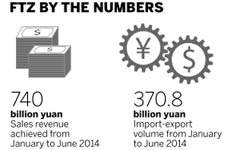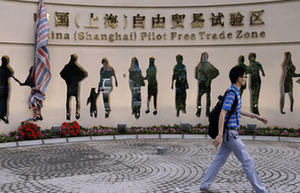There will be no more massive financial stimulus for the Chinese economy, as Premier Li Keqiang has repeatedly said. But there will be many a mini-stimulus of different kinds.
|
 |
 |
One example is the announcement on Sept 16 from the People's Bank of China, the Chinese central bank, about its use of SLF (standing lending facility), whose main use is to provide more liquidity to the market.
The central bank said it is to extend a 500-billion-yuan ($81 billion) three-month SLF to the five largest national banks. The move is seen as a new kind of stimulus that is tantamount to lowering all banks' RRR (required reserve ratio) by 0.5 percentage point.
An RRR slash may appear too strong a stimulant dose. It cannot always be readjusted, and it would look bad to go back to the old RRR in just three months. The SLF is, in contrast, much more flexible an instrument in the management of money supply.
But one thing cannot be mistaken: The SLF is also a stimulus. And China is trying all possible flexible ways to stimulate growth.
The PBOC announcement is evidence of analysts' recent forecasts that some disguised QE (quantitative easing, the way the US Federal Reserve provides liquidity to the market) may be or would be at work in China, to inject new dynamics into the economy after industrial performance in August (below 7 percent year-on-year) fell to a six-year low.
With such figures, investors were increasingly edgy, fearing a further slowdown in the last few months of the year. As a reaction to the industry's poor show, the stock markets in Hong Kong, Shanghai and Shenzhen have been on the decline.
Investors and the public usually have little patience to wait for the so-called reform dividend to percolate from the policies and practices that the leadership is only beginning to implement at the central level. It would take time, perhaps too much time, for them to yield the expected results at the city or corporate level.
Economic effect aside, the PBOC announcement shows clearly that officials in Beijing do care about stock market fluctuations. They are duty-bound to try to prevent the picture from growing cloudier in the fourth quarter, in a season of festivals and a series of high-level conferences to plan for the economic direction next year.
In fact, it is dangerous, and unnecessary, to treat a financial policy like a political commitment, such as whether to provide a stimulus. There is a risk of it being overdone.
Back in 2008-09, shortly after the Wall Street meltdown, the Chinese government made it a political task to dish out a 4-trillion-yuan (over $600 billion) worth of stimulus to keep up economic growth. It turned out that much of the amount, if not even more, was grabbed by State-owned companies, only for the economic balance to deteriorate.
Having obviously learned the lesson, the Chinese government has, since the beginning of 2014, repeatedly pledged that no more stimulus of the 2008-09 size is to be expected even though the economy is facing difficulties.
It is a good pledge, especially when there is a need to cut off credit supply to industrial capacity and building projects that are useless and wasteful.
But a strict no-stimulus shouldn't be made a political task either because there are cities with unique plans, companies with good projects, and individuals ready for business ventures. Their part of the economy deserves to be treated differently from the part that is plagued by overcapacity and pollution.
The author is editor-at-large of China Daily.
